The sun is setting on third-party cookies, and Indian D2C marketers face the twin challenge of maintaining personalisation while respecting evolving privacy norms. As cookies vanish from browsers, your ability to target, segment, and personalise campaigns is under threat. Yet, this challenge also sparks a strategic pivot: from anonymous third-party data to rich, consented first-party data—collected directly from your customers. For Indian D2C brands navigating complex buyer journeys across metro, tier-2, and rural markets, this is not a setback but a golden opportunity.
This comprehensive guide on Dynamic Segmentation Without Cookies: Leveraging First-Party Data with JMS Journey Management Systems (JMS) help you unlock the full potential of your first-party data by building dynamic, real-time customer segments without relying on cookies. Instead of generic, once-a-week clusters, JMS enables micro-segmentation informed by browsing
- behaviour
- purchase history
- engagement signals and
- contextual attributes
like location or device—delivering laser-targeted messages when customers are most receptive.
Why is first-party data more critical than ever?
Privacy shifts demand data sovereignty and customer trust
Understanding how third-party cookie loss undermines conventional marketing approaches
Cookie deprecation fundamentally breaks the cross-site tracking infrastructure that enables audience building, retargeting, attribution measurement, and personalisation across the open web. Brands lose visibility into customer journeys spanning multiple touchpoints, preventing accurate segmentation based on comprehensive behaviour patterns.
Third-party cookies enabled persistent user identification across different websites and platforms, allowing brands to recognise customers regardless of which site they visited. This cross-domain tracking powered lookalike audiences, retargeting campaigns, and multi-touch attribution models that informed marketing spend allocation and campaign optimisation.
Without third-party cookies, brands cannot track customers who browse product reviews on external sites, compare prices on aggregators, or research alternatives before returning to make purchases. This visibility loss creates attribution blind spots where marketing investments appear ineffective because conversion paths remain invisible.
Audience syncing between platforms breaks down when cookies disappear, preventing brands from creating unified customer views across advertising networks, analytics platforms, and marketing automation systems. Data silos that cookies previously bridged become impenetrable again, fragmenting customer understanding.
Retargeting capabilities erode dramatically as platforms lose ability to recognise users who visited brand websites but didn't convert. Cart abandonment campaigns, browse abandonment sequences, and product recommendation ads all depend on cookie-based recognition that privacy changes eliminate.
Frequency capping across publishers becomes impossible without cookies to track impression delivery across different websites. Customers experience ad fatigue from seeing identical creative repeatedly whilst brands waste spend on redundant exposures they cannot detect.
Attribution models relying on cookie-based tracking produce increasingly inaccurate results as visibility gaps expand. Last-click attribution overvalues direct traffic whilst undervaluing discovery channels that cookies previously tracked, distorting marketing mix optimisation.
Personalisation depth decreases when websites cannot access customer behaviour data from other domains. Without third-party cookies supplementing first-party data, websites show generic experiences to returning customers whose cross-site behaviour remains unknown.
What first-party data sources enable cookieless segmentation?
Identifying proprietary information assets that replace third-party cookie dependencies
First-party data, freely shared by customers through brand-owned channels, constitutes a valuable and privacy-compliant intelligence asset. Unlike cookies, it offers richer insights while adhering to regulatory requirements.
Key Sources of First-Party Data:
- Website Interaction Data:
Server-side tracking, JavaScript events, and session recordings capture customer behavior on owned properties. This includes page views, time on site, scroll depth, click patterns, and form interactions, revealing intent without cross-site tracking.
- Purchase Transaction Data:
This is the most crucial foundation for segmentation, as it directly reflects customer preferences through actual buying behavior. Metrics like order frequency, category preferences, average order values, and seasonal patterns enable sophisticated behavioral segmentation.
- Email Engagement Metrics:
Open rates, click-through rates, and conversion paths demonstrate content preferences and message effectiveness. Consistent engagement with specific content signals interests that can inform personalisation, even without website tracking.
- Customer Service Interactions:
Qualitative insights into pain points, preferences, and satisfaction levels are gathered through support ticket themes, complaint patterns, and resolution satisfaction. This data supplements quantitative behavioral information.
- Mobile App Usage:
Provides rich behavioral data such as session frequency, feature utilisation, and in-app conversions. App-based tracking offers persistent identification through login authentication, eliminating reliance on cookies.
- Progressive Profiling:
Customer information is collected incrementally across multiple interactions, avoiding lengthy registration forms. Each touchpoint gathers small, additional data points, gradually building comprehensive customer profiles through voluntary sharing.
- Survey Responses and Feedback Forms:
These provide zero-party data, where customers explicitly declare their preferences, interests, and intentions. This declared data offers a level of accuracy that behavioral inference cannot match.
- Loyalty Programme Participation:
Creates structured data collection opportunities through points earning activities, redemption preferences, and tier progression. Engagement with these programs signals commitment levels, enhancing segmentation beyond transactional data alone.
First-Party Data Collection Framework:
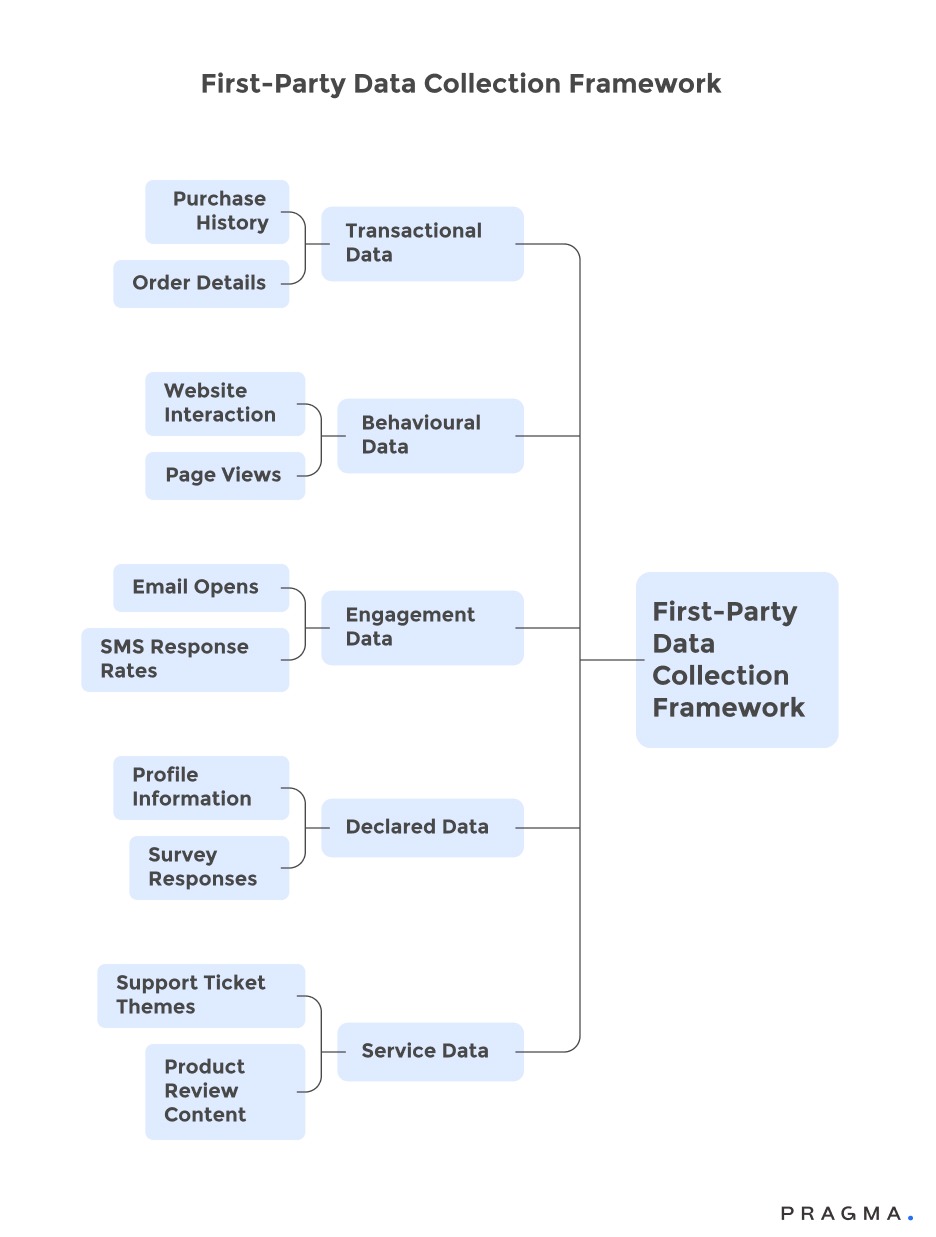
How do journey management systems unify fragmented first-party data?
Creating comprehensive customer views from disparate owned data sources
Journey management systems (JMS) are crucial for modern customer segmentation, especially with the decline of third-party cookies. They act as integration layers, consolidating first-party data from various touchpoints to create unified customer profiles. This allows for sophisticated segmentation that previously relied on third-party cookies, transforming disparate data into coherent customer narratives.
Key capabilities of JMS platforms include:
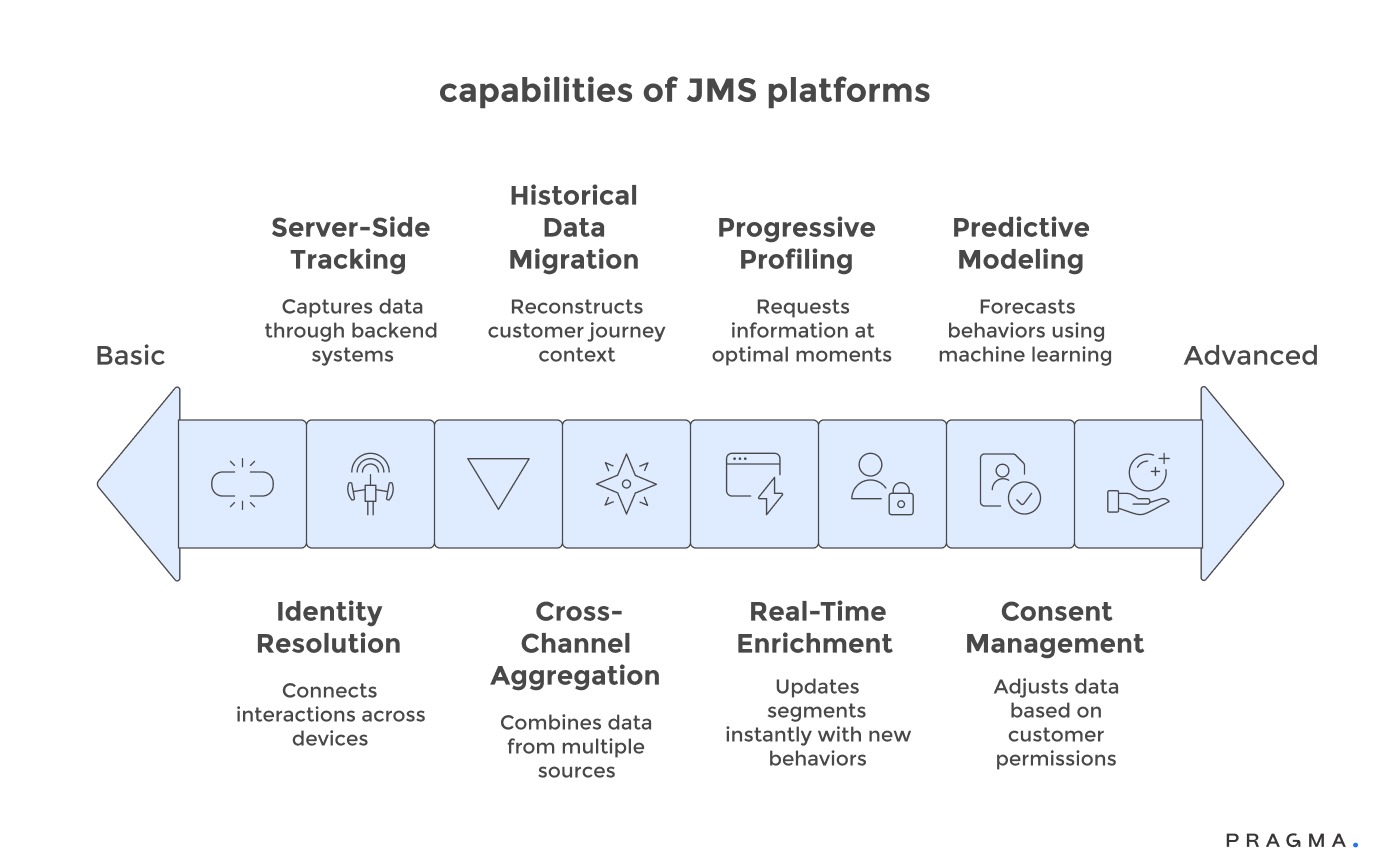
- Identity Resolution:
By using deterministic matching (e.g., email, phone numbers, account logins), JMS connects customer interactions across devices, channels, and sessions. When customers authenticate, anonymous sessions are retroactively linked to known profiles, effectively closing data gaps caused by cookie loss.
- Server-Side Tracking:
This method captures behavioral data through backend systems rather than browser-based cookies. This bypasses privacy restrictions and ad blockers, ensuring comprehensive visibility as JMS platforms process events on servers where interference is minimal.
- Cross-Channel Data Aggregation:
JMS platforms combine data from website analytics, email engagement, purchase history, customer service interactions, and mobile app usage into single customer views. This aggregation reveals patterns that are often hidden when data sources remain siloed.
- Real-Time Profile Enrichment:
Customer segments are updated instantly as new behaviors occur, enabling immediate personalisation. As customers browse specific categories, complete purchases, or engage with content, their segment assignments are adjusted in real time.
- Progressive Profiling Orchestration:
This feature identifies optimal moments to request additional customer information. JMS platforms determine when customers have built sufficient trust to voluntarily share more data, based on their engagement levels and relationship stage.
- Consent Management Integration:
JMS ensures compliance with privacy regulations by tracking consent status granularly. Data collection and segmentation are adjusted based on individual customer permissions, maximising permissible personalisation while maintaining adherence to privacy laws.
- Historical Data Migration:
This reconstructs customer journey context from legacy systems, preserving valuable insights gained before JMS implementation. Complete historical views enable accurate lifetime value calculations and in-depth analysis of long-term behavior patterns.
- Predictive Modeling:
Applying machine learning to first-party data, JMS platforms can forecast future behaviors and identify expansion opportunities. These models predict churn probability, next purchase timing, and category affinity without needing third-party data supplements.

Which segmentation strategies work without third-party cookies?
Building sophisticated audience segments using only proprietary customer data
Transitioning to a cookieless segmentation strategy means moving away from broad demographic targeting to focus on behavioral and transactional segments built exclusively from your own data. These approaches often outperform cookie-based methods because they are based on actual customer relationships rather than inferred interests.
Here are key segmentation strategies that leverage first-party data:
- RFM (Recency, Frequency, Monetary Value) Segmentation: Groups customers by transaction patterns (e.g., recent high-frequency buyers, lapsed, first-time) for tailored lifecycle marketing, solely using internal data.
- Product Affinity Clustering: Segments customers by preferred product categories and cross-sell patterns from transaction history, personalising offers without external tracking.
- Engagement-Based Tiers: Divides customers by their interaction depth across owned channels (email, website, social), informing distinct communication strategies.
- Lifecycle Stage Segmentation: Positions customers along their purchase journey (awareness to advocacy) based on interaction history, enabling distinct messaging for new subscribers, active customers, and advocates.
- Predictive Segments: Uses machine learning to forecast churn, next purchase, and lifetime value from first-party data, facilitating proactive retention and optimised investment.
- Value-Based Segmentation: Separates customers by their business contribution via lifetime value calculations, identifying high-value customers for premium service and offers without cookie-based inference.
- Content Consumption Patterns: Reveals interests from tracking content consumption on owned properties, enabling personalised recommendations without third-party tracking.
- Device and Channel Preference Segmentation: Adapts experiences based on how customers prefer to interact (e.g., mobile-first receive app-optimised experiences, email-responsive get detailed newsletters).
Cookieless Segmentation Examples:
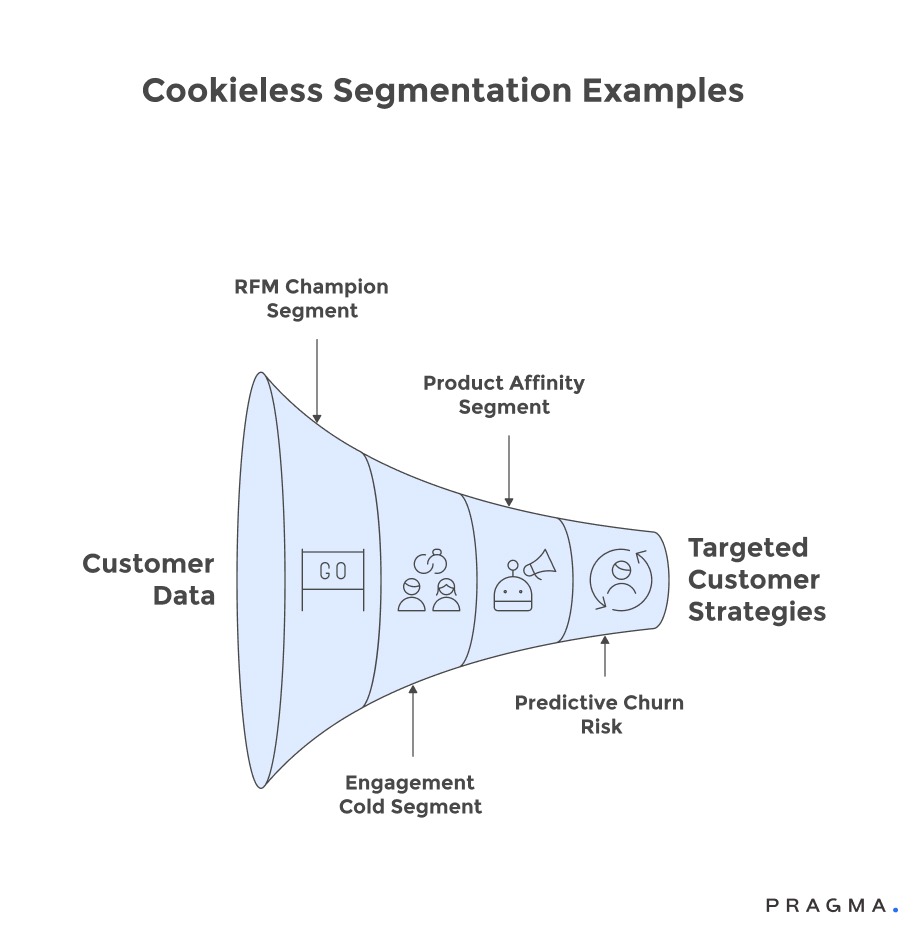
How should you collect first-party data without annoying customers?
Balancing data gathering imperatives with user experience and privacy expectations
Effective first-party data collection relies on a value exchange: customers willingly share information for tangible benefits, fostering privacy-respecting and personalised data strategies.
Key strategies for successful first-party data collection include:
- Progressive Profiling: Gradually gather data across interactions, requesting 1-2 data points per touchpoint to build comprehensive profiles without overwhelming customers.
- Value-Explicit Exchanges: Clearly communicate the benefits of data sharing, transforming it into a collaborative effort (e.g., preferences for recommendations, size for a better fit).
- Gamification: Engage customers through quizzes and style assessments to make data collection enjoyable and yield richer insights.
- Contextual Collection: Request information when it's relevant (e.g., birthday for discounts, not during account creation).
- Transparency: Build trust by clearly explaining how data improves customer experiences.
- Incremental Authentication: Move customers from anonymous to identified engagement using low-friction steps like social logins or magic links.
- Preference Centers: Empower customers to control their data sharing, often leading to more permissive settings.
- Reciprocal Value Delivery: Ensure customers who share more data receive enhanced personalisation and exclusive access, incentivising continued sharing.
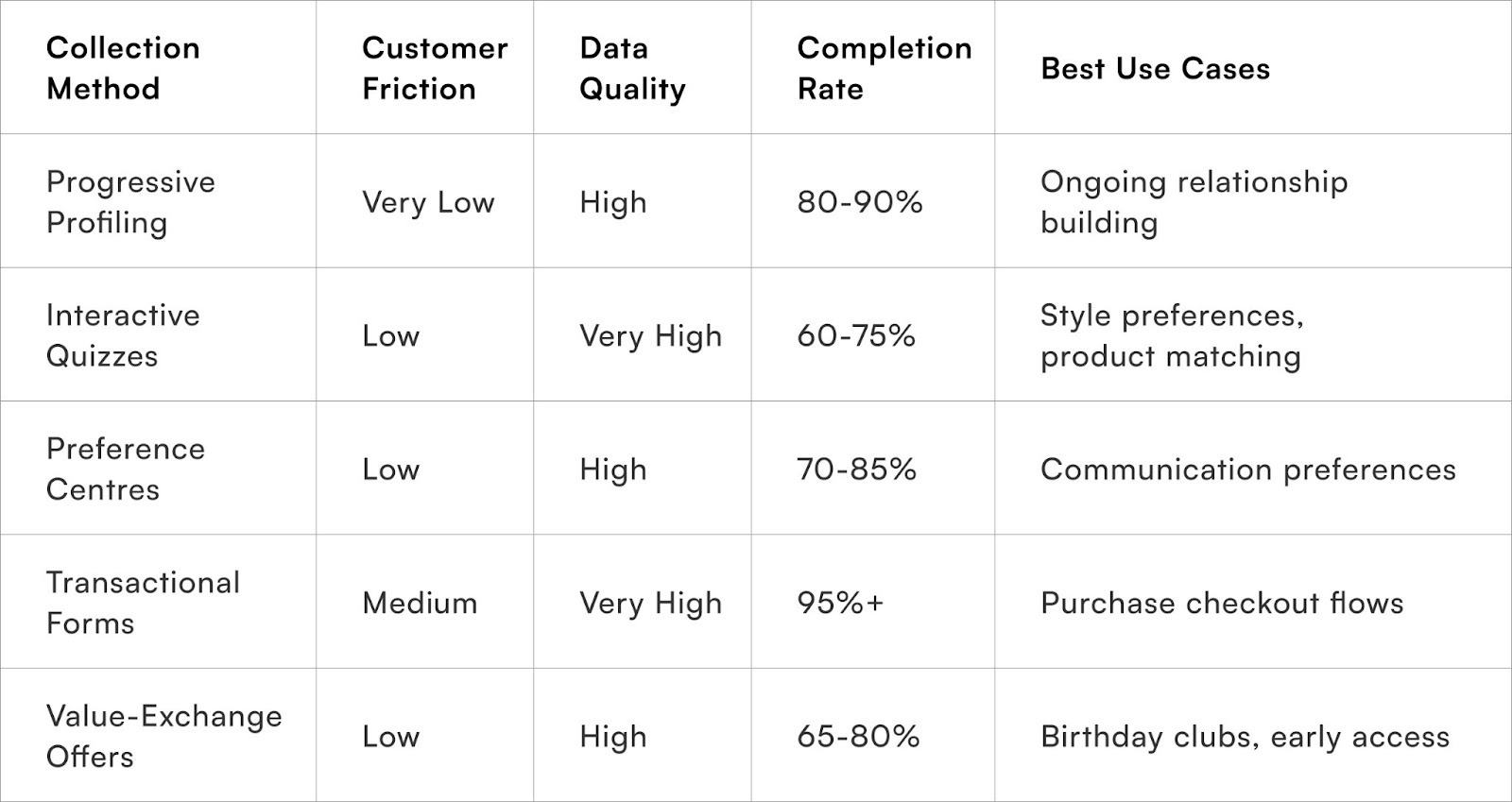
Metrics to Watch for Cookieless Segmentation Success
Track comprehensive KPIs measuring data collection effectiveness, segmentation quality, personalisation impact, and business outcomes to ensure first-party strategies outperform cookie-based predecessors.
Data Collection Quality Metrics Monitor customer identification rates measuring what percentage of website visitors eventually authenticate or provide identifiable information. Target identification rates above 60-70% through progressive profiling and value exchange offers.
Profile completeness scores track how much information exists for each customer across critical data dimensions including demographics, preferences, transaction history, and engagement patterns. Aim for 80%+ completeness on key fields for active customers.
Segmentation Effectiveness Indicators Segment size distributions ensure cohorts remain actionable rather than too broad or narrow for meaningful differentiation. Healthy segmentation produces groups representing 5-25% of customer base enabling distinct strategies without excessive fragmentation.
Segment stability measures how frequently customers move between cohorts, with excessive movement indicating poor segment definitions. Well-designed segments show 60-80% monthly stability whilst allowing natural progression.
Personalisation Performance Measures Engagement lift compares interaction rates for personalised versus generic experiences across email, website, and app touchpoints. Target 25-40% engagement improvements from segmentation-driven personalisation.
Conversion rate improvements demonstrate whether better segmentation drives business outcomes beyond vanity engagement metrics. Personalised experiences should improve conversion 15-30% compared to one-size-fits-all approaches.
Business Impact Metrics Customer lifetime value progression tracks whether sophisticated segmentation enables better customer development through targeted nurturing. Monitor CLV growth rates by cohort to validate segmentation strategy effectiveness.
Marketing efficiency gains measure whether first-party segmentation reduces wasted spend on irrelevant audiences whilst improving returns on targeted campaigns. Target 20-35% efficiency improvements through better audience precision.
Privacy Compliance Indicators Consent rates track what percentage of customers provide permission for data collection and personalisation. Healthy consent strategies achieve 70-85% opt-in rates through clear value propositions.
Data subject request volumes and resolution times demonstrate operational readiness for privacy rights management. Maintain response times under 15 days whilst keeping request volumes stable indicating customer trust.
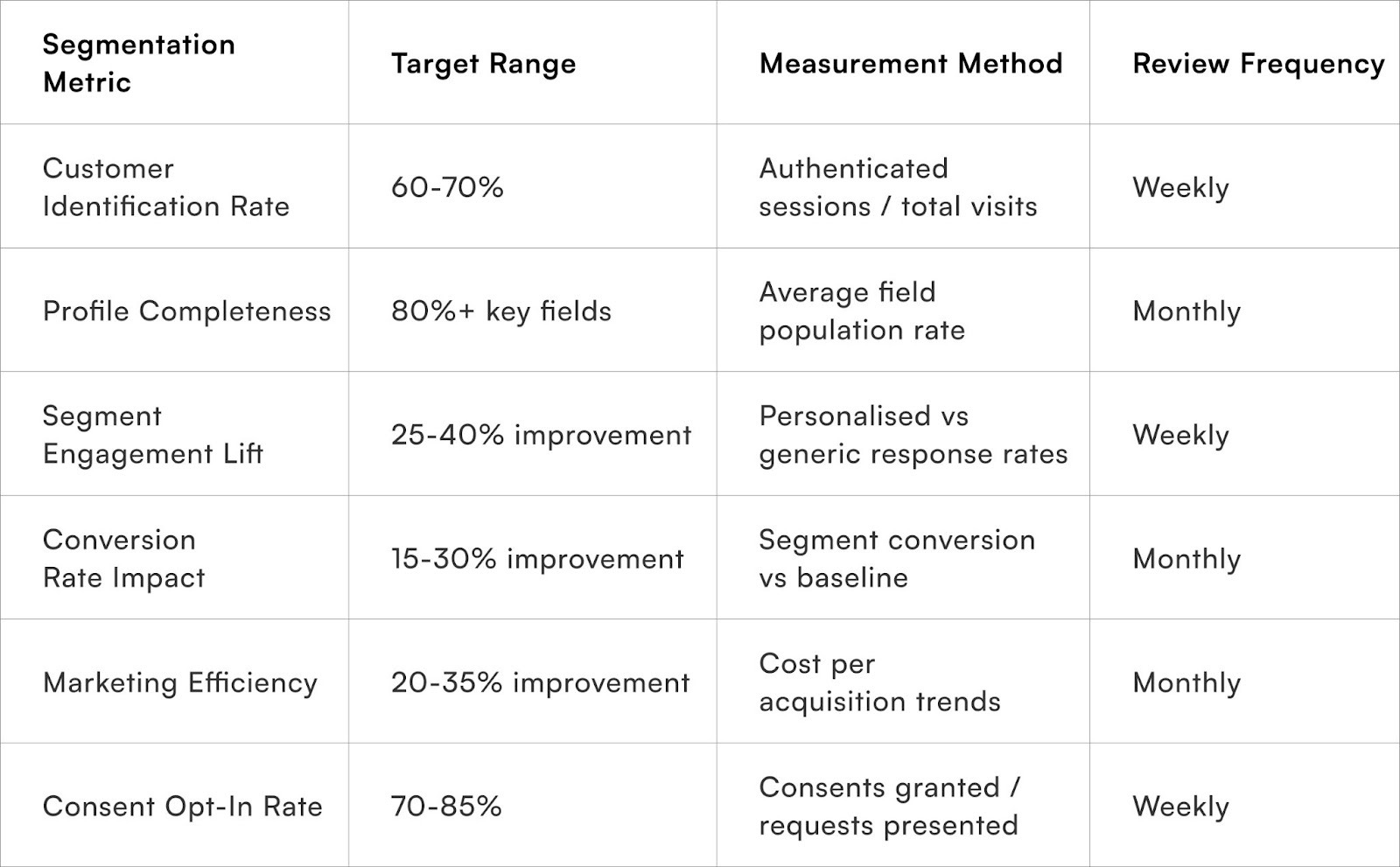
To Wrap It Up
Cookie deprecation represents opportunity rather than crisis for brands willing to invest in first-party data infrastructure and sophisticated journey management systems. The organisations that thrive in privacy-first environments will be those that build direct customer relationships yielding proprietary intelligence competitors cannot replicate.
Begin by auditing your current first-party data sources this week and implementing server-side tracking to ensure behaviour visibility survives cookie restrictions. These foundational steps protect existing capabilities whilst establishing platforms for advanced segmentation.
Privacy-compliant segmentation strategies actually outperform cookie-based targeting because they reflect genuine customer relationships built on voluntary data sharing and value exchange. Customers increasingly prefer brands that respect privacy whilst delivering personalised experiences through transparent practices.
The transition from cookie-based to first-party segmentation requires operational investment and strategic commitment, but organisations that master these approaches create sustainable competitive advantages that regulation changes cannot erode.
For D2C brands seeking sophisticated journey management systems that unify first-party data and enable advanced cookieless segmentation,Pragma's customer intelligence platform provides identity resolution, cross-channel aggregation, and predictive modelling capabilities that help brands achieve 70-80% customer identification rates whilst improving marketing efficiency by 20-35% through privacy-compliant segmentation and personalisation that outperforms cookie-based approaches.

FAQs (Frequently Asked Questions on Dynamic Segmentation Without Cookies: Leveraging First-Party Data with JMS)
How accurate is first-party data segmentation compared to cookie-based targeting?
First-party segmentation often proves more accurate because it reflects actual customer relationships and behaviours rather than inferred interests from browsing patterns. Studies show first-party data improves customer acquisition costs by 83% and ROI by 72% compared to third-party cookie approaches.
What's the minimum data needed to start effective cookieless segmentation?
Basic transactional data including purchase history, order frequency, and spending patterns enables powerful RFM segmentation immediately. Adding email engagement metrics and website behaviour data enhances sophistication, but transaction data alone supports meaningful personalisation.
How do you build lookalike audiences without third-party cookies?
Use first-party transaction and behavioural data to identify high-value customer characteristics, then apply these patterns to prospect databases or leverage platform-specific modelling like Facebook's Value-Based Lookalikes that use your customer data rather than third-party cookies.
Should Indian D2C brands worry about GDPR if they only serve domestic customers?
Focus on India's Digital Personal Data Protection Act which establishes similar principles around consent, transparency, and individual rights. Building GDPR-aligned practices future-proofs operations whilst demonstrating customer respect that builds trust and differentiation.
Talk to our experts for a customised solution that can maximise your sales funnel
Book a demo



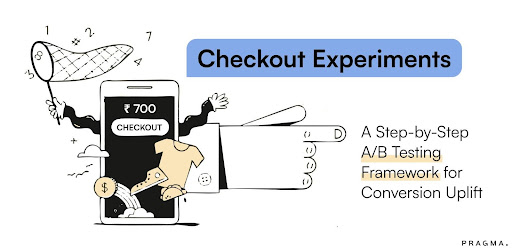
.png)